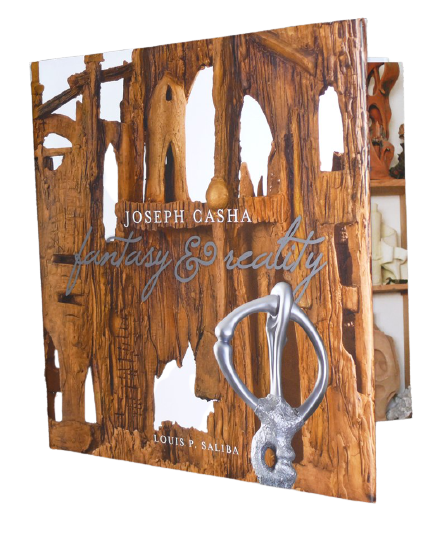by Joseph Muscat
In the preface to the book, Paul Xuereb writes about “the endless quest for shapes and textures corresponding to that mixture of emotional, aesthetic and technical research that drives the artist forward as he creates”.
He quotes the artist, saying that “apart from familiar images, (he is) also keen on creating forms that exist only in (his) imagination. To merge the two, forms and images, is (his) greatest ambition”. Though Casha has produced sculptures in wood, marble, stone and other materials, it is the medium of terracotta that gives him full scope to merge form and image.
In his hands, the clay twists and curls, is stretched to thin, pointed pinnacles or flattened to curious shapes, till it reaches that perfect form which satisfies him. The result is not like anything you have seen before, though British and Italian influences keep suggesting themselves.
I have never watched Casha at work but it seems to me many of these shapes grew out of the process of making, rather than being executions of shapes that had been visualised by the artist before starting to work on them. The finished object looks spontaneous but, on closer examination, the thinking, contemplation, re-definition, changing of moods that went into its making become evident.
Louis Saliba’s book, in a numbered, limited edition of 500, is a fit tribute to the artist. Saliba is no stranger to Casha’s work, having been close to him for many years and having recently curated Casha’s Bank of Valletta Retrospective Exhibition for which he produced a very comprehensive catalogue. The book conveniently divides Casha’s life and work into three sections.
The first section, covering the years 1939 to 1974, describes the first 35 years, dwelling mainly on the years of study at the Malta School of Art under George Borg and Samuel Bugeja, at the Accademia di Belle Arti in Rome, and at the Brighton College of Art and Craft in the UK.
These years enabled the young artist to undergo the discipline of the Accademia, to work in clay and ceramics, wood carving, pottery and print making.
Saliba describes in detail these years, including praise from teachers and art critics who were impressed by the young artist’s ability and promise. TheSculpture International, in 1967, described Casha as “a leading Maltese artist with a marked individuality”, the result of “a combination of Latin and British influence after studying in Italy and Britain”.
The second section, covering the years 1976 to 2004, highlights the period of maturity,where form becomes the main concern. The sculptures of this period become highly convoluted and the artist seeks to create space within the sculptures themselves.
They are mainly in clay, though the artist always insisted on calling them sculptures and not ceramics. It is in these abstract forms that the British influence is most evident. The third section starts with the BoV Retrospective Exhibition which Saliba curated. As is to be expected, material which had been used for the catalogue finds itself here, but there is added material bringing the account to the present day. This section is dominated by curled forms, fantasy sculpture, castles, towers, fortresses and pinnacles which seem to come straight out of the Gothic novels of the 19th century.
Joseph Casha – Fantasy and Reality is an excellent record of the artist’s life and works.The format is large, 28cm by 28cm, allowing for large, whole-page reproductions of the sculptures and drawings.
Saliba has left with us a picture of “a man you can trust, generous to a fault, neat and ordered, an organiser, an artist, a sculptor faithful to his ideal, whose aim is to produce paintings and sculptures that do not only please the eye and adorn their surroundings but are also a source of spiritual peace and relaxation”. This book will leave no doubt that the artist has achieved his aim.
This feature is extracted from an article “He’s got the world in his hands” by Joseph Muscat published on the The Sunday Times of Malta, November 1, 2009.

